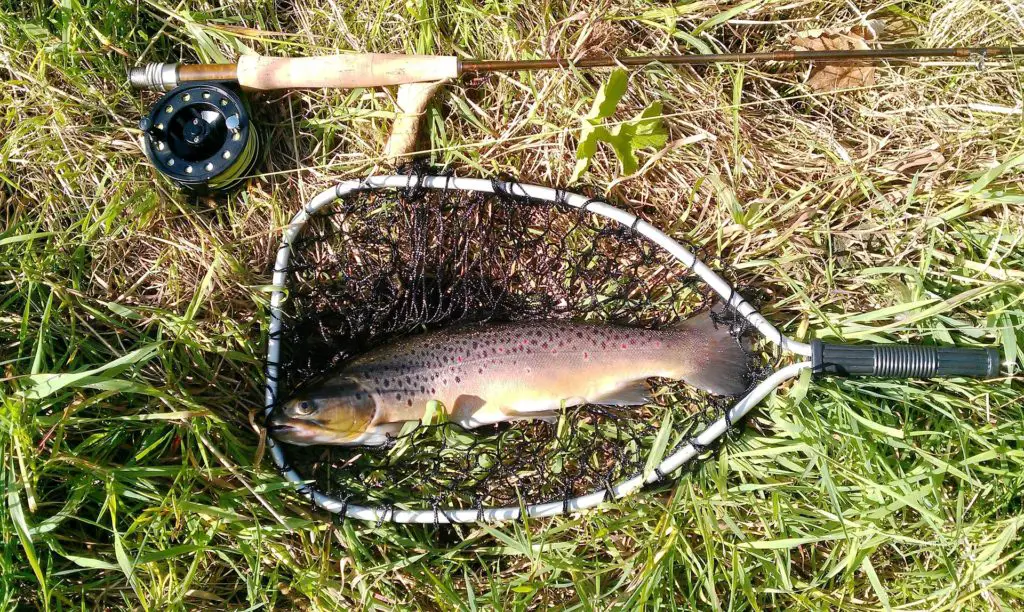As an angler, you’ve likely heard the age-old question: do trout have teeth? It’s a simple question, but the answer may surprise you. Some anglers believe that trout have no teeth, while others insist that they do. So, which is it? Do trout have teeth or not?
The truth is that all species of trout do have teeth, but the type and arrangement of their teeth can vary. Understanding the teeth of different trout species is crucial for successful fishing, as it can help you choose the right bait and fishing technique to catch these elusive fish. In this comprehensive guide, we’ll explore the types of teeth that trout have, how they use them, and what you can do to ensure a successful fishing trip. So, let’s dive in and find out more about the teeth of trout!
What are the Different types of Trout Teeth?
Trout have several different types of teeth, depending on their species and age. The most common type of teeth found in trout are called “vomerine teeth,” which are located on the roof of the trout’s mouth. These teeth are small and sharp and are used to hold and grip prey.
Trout also have “pharyngeal teeth,” located in the back of the throat. These teeth are used for crushing and grinding up food, such as crustaceans and insects.
In addition to these types of teeth, some trout species have “conical teeth” or “canine teeth,” which are larger and more pointed than the other types of teeth. These teeth are used for grasping and tearing apart prey.
It’s important to note that not all trout have the same type or arrangement of teeth. The type of teeth a trout has depends on its species, diet, and age. For example, younger trout may have more conical teeth for catching smaller prey, while older trout may have more pharyngeal teeth for grinding up larger game.
Rainbow Trout Teeth Arrangement
Rainbow trout have several types of teeth, including vomerine teeth, pharyngeal teeth, and conical teeth. Vomerine teeth are small, sharp teeth located on the roof of the mouth, which is used to hold and grip prey. Pharyngeal teeth are located in the back of the throat and are used for crushing and grinding up food, such as crustaceans and insects.
Rainbow trout also have conical teeth, which are larger and more pointed than their other teeth. These teeth are used for grasping and tearing apart prey. The number and arrangement of these teeth can vary depending on the size and age of the trout.
It’s important to note that rainbow trout are not known for having particularly strong teeth, so they may not be able to bite through heavy fishing lines or leaders. However, their teeth are sharp enough to effectively hold onto bait and lures, making them a popular sport fish for anglers around the world.
What Type of Teeth does a Brown Trout Have?
Brown trout have several types of teeth that are similar to other trout species. They have small, sharp vomerine teeth located on the roof of their mouth that are used to hold and grip prey. Brown trout also have pharyngeal teeth located in the back of their throat that are used to crush and grind up food, such as crustaceans and insects.
In addition to these types of teeth, brown trout are also known to have larger, sharper conical teeth than other trout species. These teeth are used for grasping and tearing apart prey, such as small fish or crustaceans.
The arrangement and number of teeth can vary depending on the size and age of the brown trout. However, overall, their teeth are relatively strong and sharp, allowing them to effectively catch and consume their prey. As with other trout species, understanding the type of teeth that brown trout have can be helpful for choosing the right bait and fishing technique when targeting them.
Rainbow vs. Brown Trout Teeth
While rainbow trout and brown trout have many similarities in their teeth, there are some differences between the two species.
One of the main differences is in the shape and size of their conical teeth. Brown trout are known to have larger and sharper conical teeth compared to rainbow trout. These teeth are used for grasping and tearing apart larger prey, such as other fish. In contrast, rainbow trout have smaller and less pronounced conical teeth, which are used for grasping and holding smaller prey.
Another difference is in the number and arrangement of their teeth. Brown trout tend to have a more irregular arrangement of teeth, with some teeth pointing inward and others pointing outward. Rainbow trout, on the other hand, typically have a more regular and uniform arrangement of teeth.
Finally, while both species have pharyngeal teeth in the back of their throat, the number and size of these teeth can vary. Brown trout tend to have larger and more numerous pharyngeal teeth, which are used for crushing and grinding up larger prey. Rainbow trout, on the other hand, may have fewer and smaller pharyngeal teeth, which are better suited for crushing and grinding up smaller prey.
Understanding these differences in teeth between rainbow trout and brown trout can be helpful for anglers in choosing the right bait and fishing technique when targeting these fish.
In conclusion, trout have a variety of teeth that are well-suited for their diet and hunting habits. Different trout species have variations in the size, arrangement, and type of teeth they possess. Vomerine and pharyngeal teeth are common among most trout, while conical teeth are more prominent in brown trout. Knowing the type of teeth that trout have can be beneficial for anglers in selecting the right bait and fishing technique when targeting these fish. Whether you are fishing for brown trout, rainbow trout, or other species of trout, understanding their teeth and how they use them can help you have a successful fishing trip.

